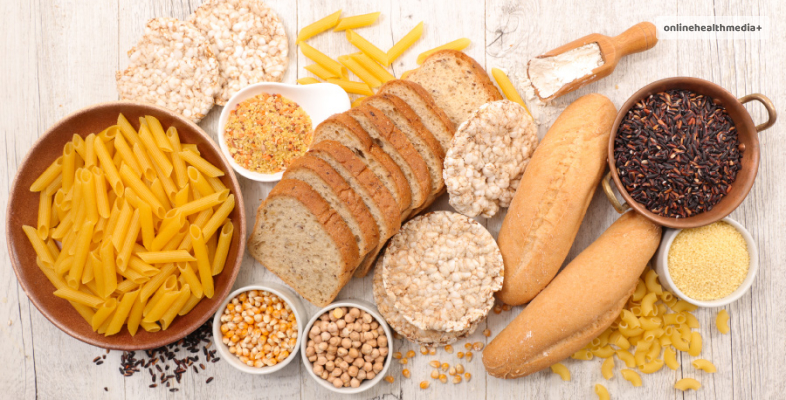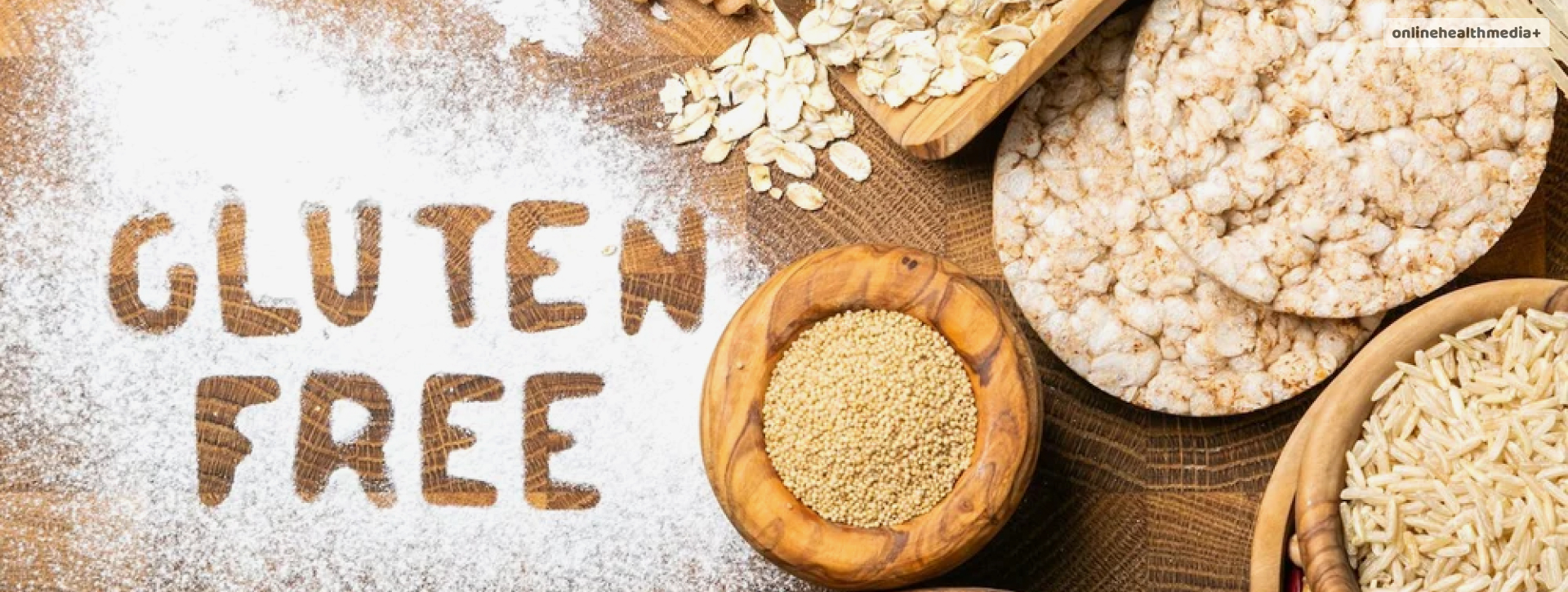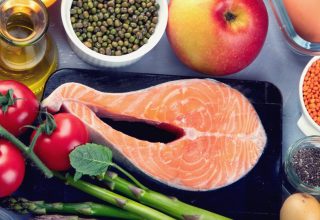Beginner’s Guide To Gluten Free Diet: What Is It & How To Get It Right!
Gluten is a substance that is found in grains such as wheat. The purpose of this protein is to bind the food together and add a stretchy quality to the food. The trend of diets excluding certain food groups began with the rise in cases related to their consumption.
Gluten free diet gained popularity due to the ill-effect of gluten on people’s health. Some people may suffer severe consequences of consuming gluten which alleviate on their own, while some experience serious issues that do not get better easily.
The diseases that people may develop include celiac disease, non-celiac gluten sensitivity, gluten ataxia and wheat allergy. All of these can be detrimental to the overall health and wellbeing of the individual where they may experience various symptoms affecting different systems of the body.
The following article will focus on the whys and hows of a gluten free diet and suggest items that must be eliminated from the diet.
Off topic, did you know about the health benefits of a Vegan diet? If not, then read the article about the vegan diet.
Harmful Effects Of Gluten

Since we have been in schools, we are taught the importance of a healthy, balanced diet that is beneficial for us and one that provides us nutrition. The main concept of a balanced diet is to ‘balance’ the different food groups so that we have a proper amount of everything that is necessary for our growth and development.
These also support the functioning of our body systems, making sure the cells are nourished and hydrated.
However, certain individuals may develop or have issues related to the digestion of a certain food group such that it causes mild to severe symptoms. These can range from discomfort that goes away after a while, to illnesses that develop for a prolonged time.
Following is a list of issues that develop due to gluten:
-
Celiac Disease
The well-known issue, celiac disease is a condition where the body mistakes gluten for a foreign material that is harmful for the body. The body overreacts to the gluten and attacks the protein as a foreign threat.
This attack is capable of damaging the surrounding areas such as gut walls. The effects of this attack are known to be- nutritional deficiency, severe digestive issues as well as the risk of several harmful diseases.
The common symptoms of the disease are- diarrhea, stomach pain, bloating, weight loss, skin rash, and stomach discomfort. It is also found that people with celiac disease may not develop digestive symptoms, they may exhibit signs of fatigue, anemia and depression.
-
Non-Celiac Gluten Sensitivity
Non-Celiac Gluten Sensitivity or NCGS, is a condition that affects nearly 0.6 to 13% of the people. The diagnosis of NCGS does not warrant a diagnosis of celiac disease or wheat allergy, however they do experience discomfort after consuming gluten.
The symptoms of NCGS are- sharp stomach pain, changes in bowel movement, bloating, skin rash, and tiredness. The identification of the condition may be difficult due to the absence of diagnostic tests.
-
Gluten Ataxia
Like celiac disease, gluten ataxia is also an autoimmune disorder that attacks the nervous system in response to the consumption of gluten. The disease can be related to either celiac disease or NCGS. The condition is rarely seen in individuals.
Symptoms of gluten ataxia include- balance disturbance, hindrance in coordination, trouble moving eyes, tingling in extremities, problems with gait, and damage to cerebellum.
People above 50 years are affected, with nearly 15% of the populace accounting for the diagnosis.
-
Wheat Allergy
This is an allergic reaction to the consumption of gluten as well as other proteins present in grains such as wheat. The condition is known to cause symptoms such as- headache, hives, nasal congestion, swelling in throat or mouth and difficulty breathing.
The condition is usually witnessed in children, with some of them outgrowing the condition by the time they become adolescents. The people who have developed this allergy are not allergic to gluten, however, they are allergic to wheat-based products such as pasta, pasta, and other baked items.
What Is A Gluten Free Diet?

A gluten free diet excludes anything that has gluten including several other items such as wheat. The diet restricts an individual to a diet that does not contain gluten. This leaves food groups such as vegetables, fruits, meat, poultry and dairy. The processed food which excludes gluten from the wheat can also be included in the diet. For example, using gluten-free bread or pasta.
The gluten free diet was invented by Willem-Karel Dickle in the early to late 1900s. This was when he hypothesized that wheat protein can be the culprit of diseases such as celiac disease. In addition, the diet can also include excluding items that may have added gluten during processing for the texture that is provided by gluten.
Please note, the acceptance of a gluten free diet does not mean the exclusion of carbohydrates that do not have gluten such as beans, potatoes, rice and others.
A vegan diet can help you lose weight if you stick to it. However, knowing what you should eat and how much is important read this article Ultimate Guide To Vegan Diet For Weight Loss.
Who Is It For?

The diet is specifically beneficial for people who have celiac disease along with NCGS and gluten ataxia. The people who experience several allergic reactions upon the condition, are also recommended the diet. The cause of irritation or experiencing the symptoms can be ascertained to be gluten through following a temporary elimination of gluten. This can be done through either following a short-term gluten free diet or a low-FODMAPs diet.
The low-FODMAPs diet is a similar diet as gluten free diet, however, it also excludes dairy, beans and lentils. After a few days of following either of the two diets you experience comfort and less prevalence of symptoms such as bloating, stomach ache and constipation post gluten consumption. You can conclude that you have a gluten intolerance.
What Is Allowed?
The food items that qualify for consumption in gluten free diet are:
- Fruits such as melons, oranges, pineapples, berries, and pears.
- Vegetables such as tomato, broccoli, mushroom, potato, carrot and asparagus.
- Dairy products such as plain milk, yogurt, cheese and other unflavored dairy products.
- Poultry products such as eggs, chicken, duck, turkey and goose.
- Meat and fish such as mutton, beef, fish
- Grains except wheat such as quinoa, rice, corn, millet, and buckwheat.
- Nuts and seeds such as almonds, walnuts, pistachio, chia seeds, flax seeds, and cashews
- Beverages such as coffee, cold drinks, tea, milk-based drinks
- Starches and flours such as potato flour, cornstarch, chickpea, soy flour, tapioca flour and almond meal or flour.
- Oils such as vegetable oil, coconut oil, and olive oil.
What Is Restricted?
The main source of gluten in your diet is wheat, eliminating wheat-based products must be eliminated from the diet. Swapping it with alternatives will help you overcome the symptoms related to gluten intake. The following list provides the items that must be removed from your diet if you are thinking of going gluten-free.
- Wheat-based Bread
- Wheat-based Pasta
- Wheat-based Baked goods
- Wheat-based Cereals
- Snacks such as muesli bars, candies, chips, pretzels etc.
- Sauces such as salad dressings, soy sauce, hoisin sauce etc., unless they are labeled gluten-free.
- Beverages such as beer
- Fast foods such as pizza, burger etc., unless they are specifically gluten free.
Conclusion
Thai was all on the gluten free diet. It is important for you to note as a beginner that adopting a gluten and dairy free diet requires supervision. Adopting it without experiencing any health complications can lead to perceived nutritional deficiencies, which can be detrimental for your health.
Also Read
- Top 15 Best Liquid Vitamins For Women in 2022
- Top 10 Best Portable Oxygen Concentrator in 2021
- Top 9 Liquid Prenatal Vitamins – With Pros And Cons



